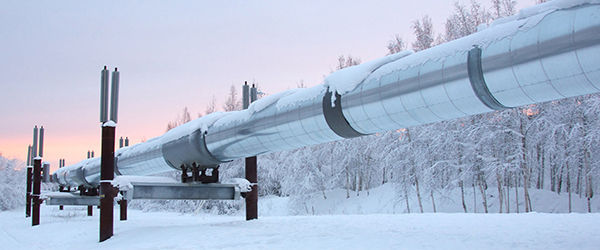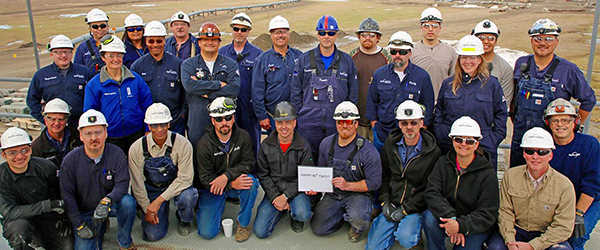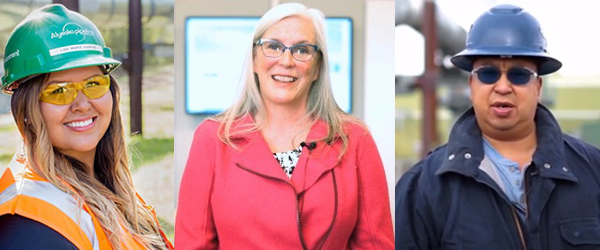Valdez Marine Terminal (VMT)
Valdez Marine Terminal (VMT)
The Valdez Marine Terminal (VMT) marks the southern terminus of the Trans Alaska Pipeline System (TAPS). Situated on 1,000 acres on the southern shore of ice-free Port Valdez, this is where tankers have loaded Alaska North Slope Crude cargo for four decades, since TAPS startup in 1977. Alyeska employees and contractors work all over the VMT– in offices and warehouses and fabrication shops, on docks and loading berths and heavy equipment, and in sophisticated process areas such Ballast Water Treatment and a power plant.
The facility was designed to load tankers and provide temporary storage capacity to increase reliability and allow North Slope production to operate without impact from marine transport system delays. It cost approximately $1.4 billion to construct and stretches in elevation from sea level to 660 feet up the forested and often snowy Valdez mountainside. The facility has its own emergency and fire response team, and through the Power Vapor Facility, creates its own power. The VMT today operates two loading berths, with 14 storage tanks in service and a working inventory capacity of 6.6 million barrels of crude oil.
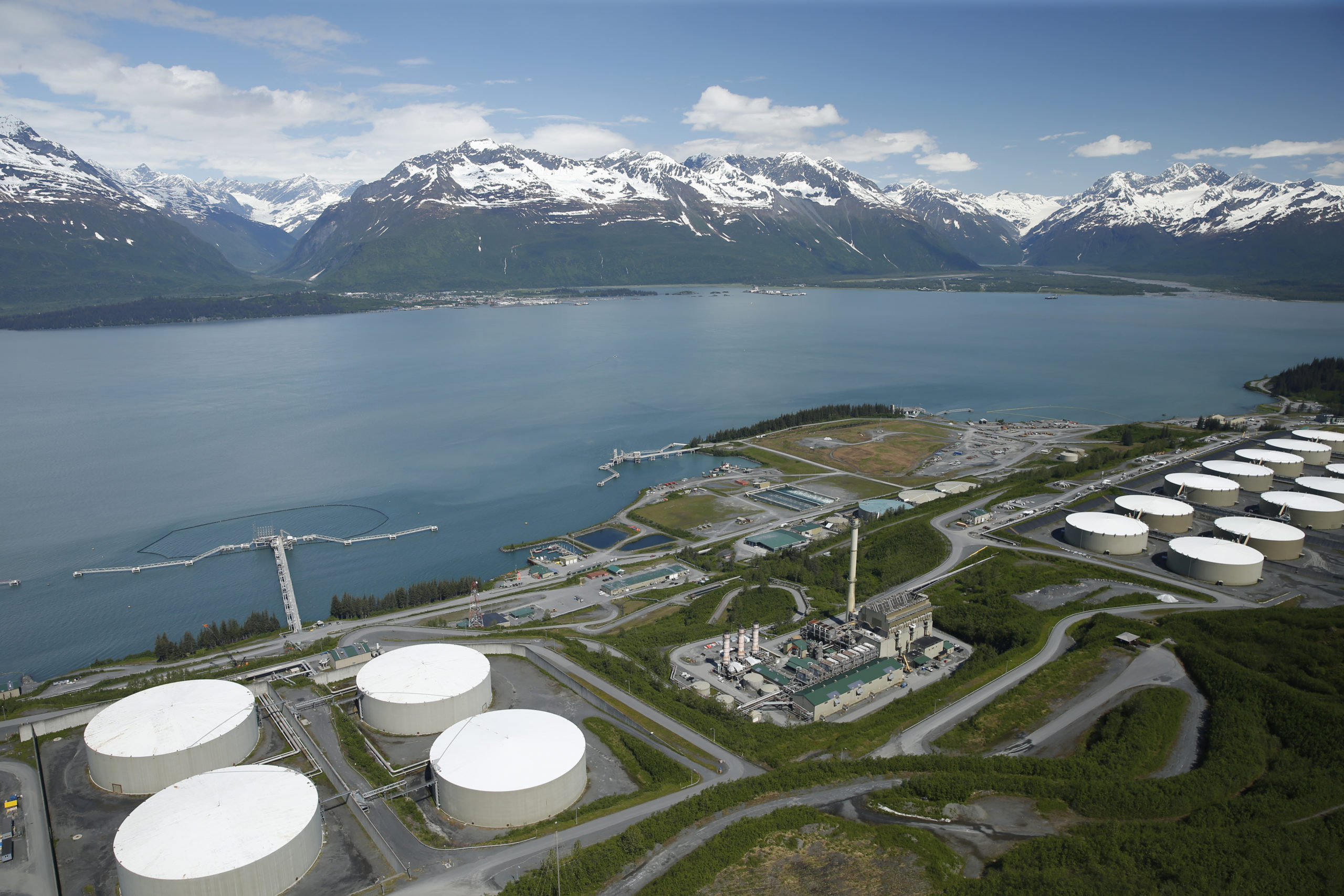
Tanks
The VMT is home to 18 crude oil storage tanks, 14 of which are in service. Each tank has a capacity of 510,000 barrels, features a conical fixed roof, and is supported by 61 interior columns. The storage tanks are paired within containment dikes that hold 110 percent of the volume of both tanks, which accounts for water and snow accumulation. The tanks provide temporary storage capacity for incoming crude oil and hydrocarbon vapors that off-gas from inventory are carefully managed by the Power Vapor Facility.
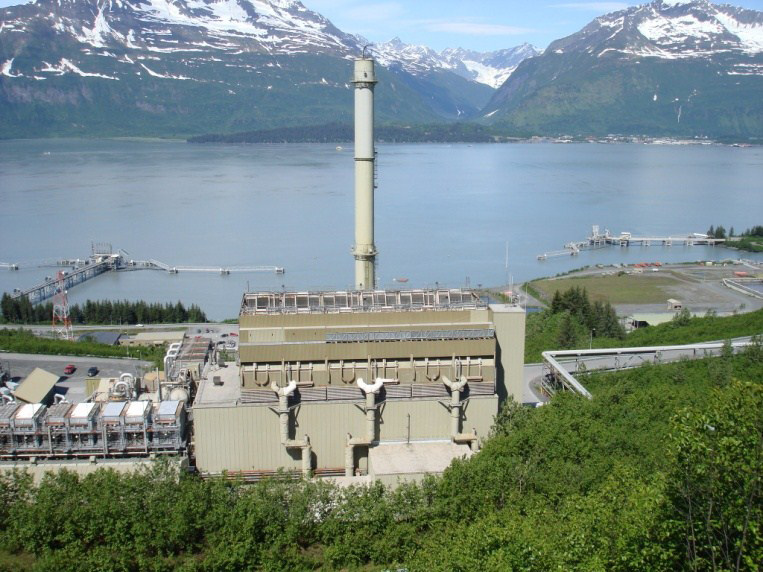
Power Vapor
The power-generation facility on the VMT, Power Vapor’s primary facilities include three steam boilers each with an output of 175,000 pounds/hour at 600 psi at 750F. The facility manages vapors from the tank farm and tanker loading activities; Berths 4 and 5 are both connected to Power Vapor. The plant can produce at least 50 percent of power requirements for the VMT from the vapor system; the rest is supplemented by ultra-low sulfur diesel.
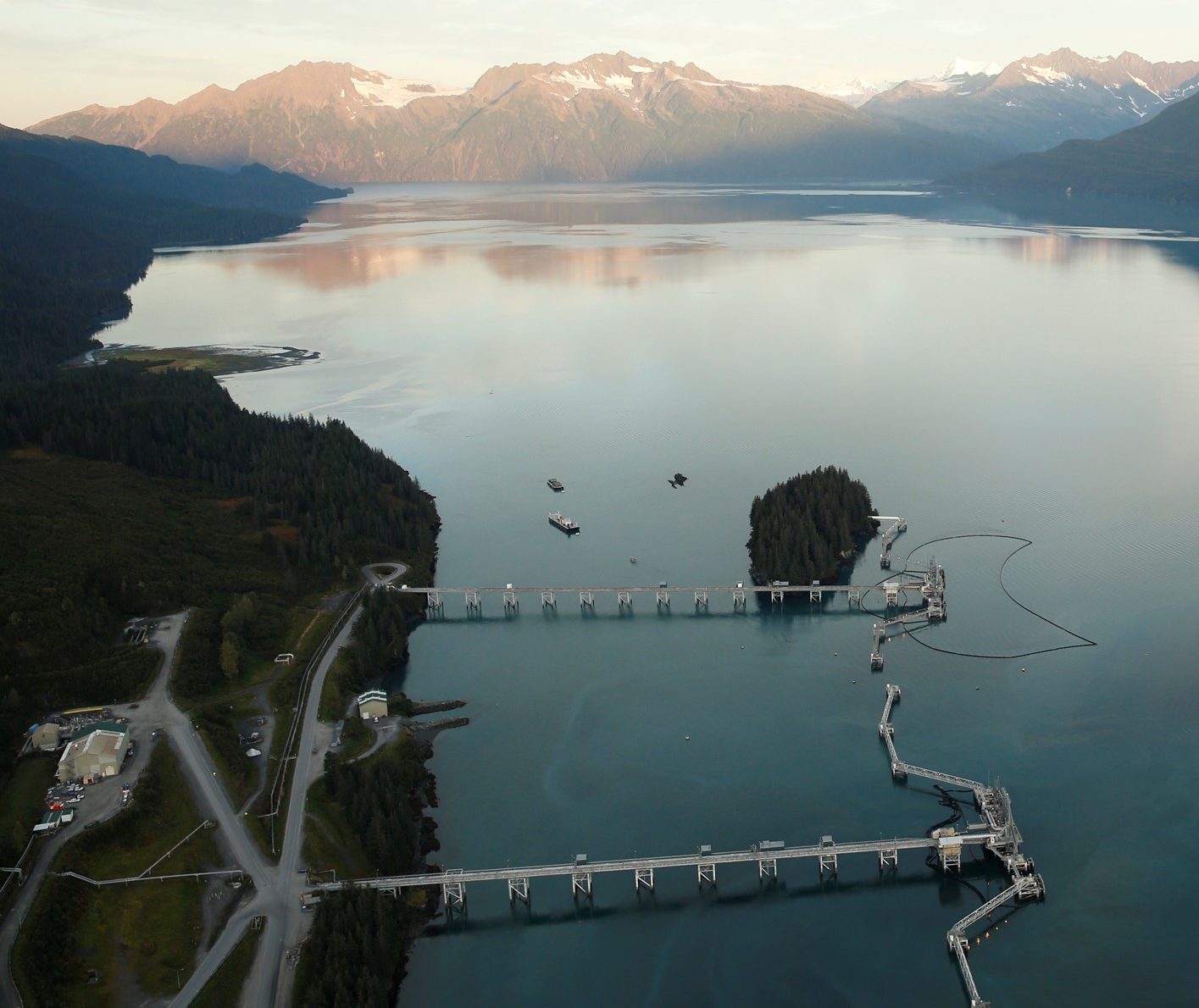
Loading berths
About 20 tankers a month load at the Terminal. Alyeska does not own the tankers, but conducts all tanker loading and, through the Ship Escort/Response Vessel System (SERVS), is contracted as primary response action contractor in the event or threat of an oil spill from a tanker carrying TAPS-transported crude. The VMT originally had four operational berths; Berths 1 and 3 are now out of service. Berths 4 and 5 are operational, both with vapor-recovery arms.
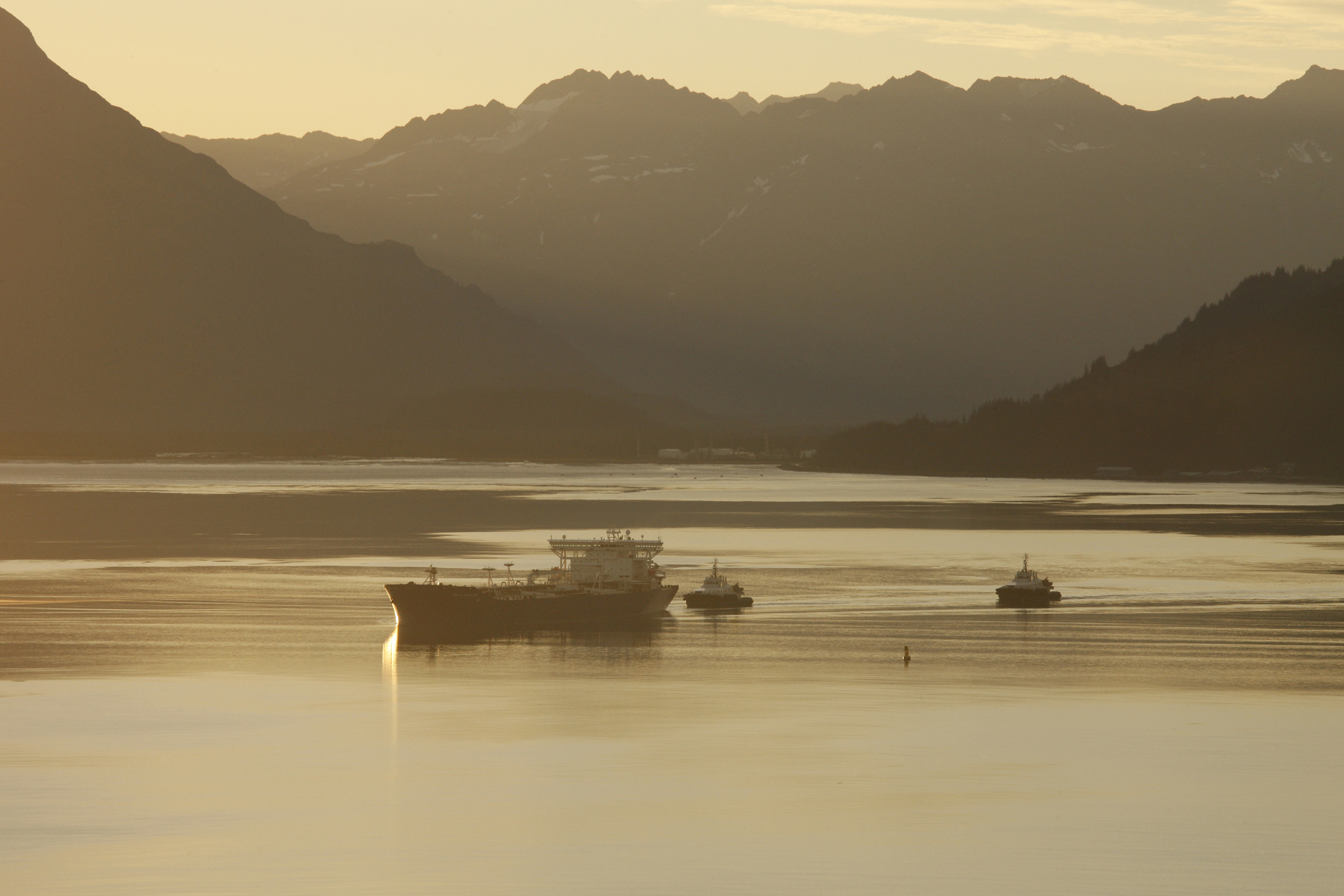
Tankers
Alyeska does not own the tankers loaded with crude at the Valdez Marine Terminal. They are owned by shipping companies who contract with producers to carry crude oil to market. The entire berthing and loading process takes about a day to complete, and the largest tankers carry up to 2 million barrels of oil.
Tankers carry ballast on the way to the Valdez Marine Terminal. Ballast is water taken on by a tanker to stabilize the ship when it is not carrying crude oil. Today, many tankers have separate tanks for water and cargo, but some still carry ballast and crude oil in the same compartment. The Ballast Water Treatment plant can process any ballast contaminated with oil.
Alyeska, through its Ship Escort/Response Vessel System (SERVS), is the primary oil spill response contractor for the shipping companies and provides response equipment and personnel in the event or threat of an oil spill.
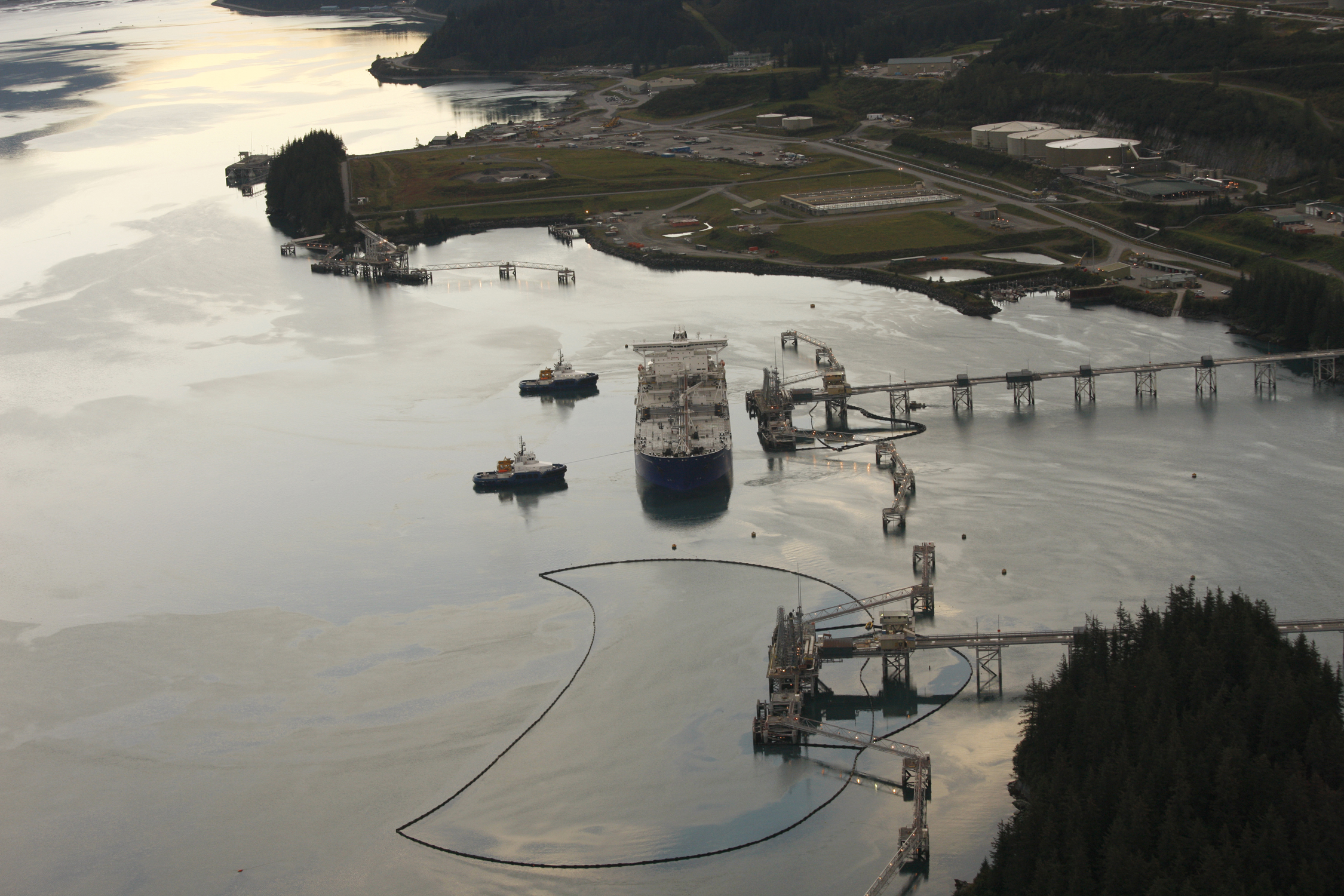
Ballast Water Treatment
This water treatment plant treats around 9 million barrels of water a year. Approximately 35% off that is storm ballast from tankers, which is water taken on by tankers to stabilize the ship when empty. The rest is a combination of industrial waste water generated from operations and storm run-off collected from process areas around the VMT. Water is treated through a series of settling tanks, Dissolved Air Flotation Units, air strippers, thermal oxidizers and biological treatment tanks before it is safe to discharge into Port Valdez. Each year, the plant collects approximately 75,000 barrels of recovered crude and returns it to the system for loading onto tankers.
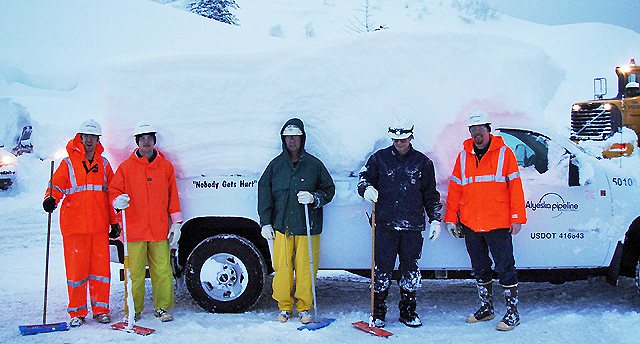
Snow!
Valdez is often referenced to as “Snowtown, USA;” the snowiest town in America. While that means Valdez employees and their families get to enjoy all forms of winter recreating, it also translates into a significant effort to keep the VMT running throughout the winter, when storms can dump as much as three feet of snow in a day! Loaders and other heavy equipment clear miles of roads around the VMT all winter, and crews are on site to manually remove snow from tank tops and other process areas where machinery is not permitted.
